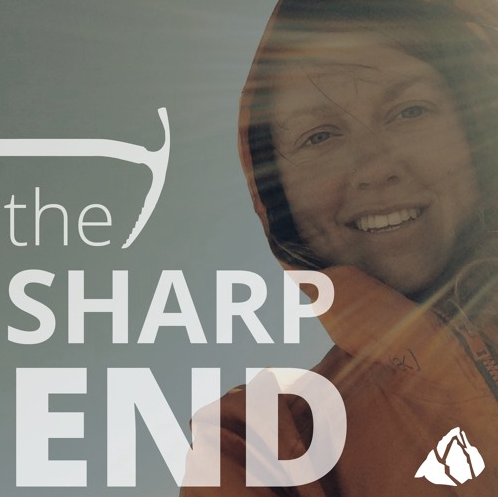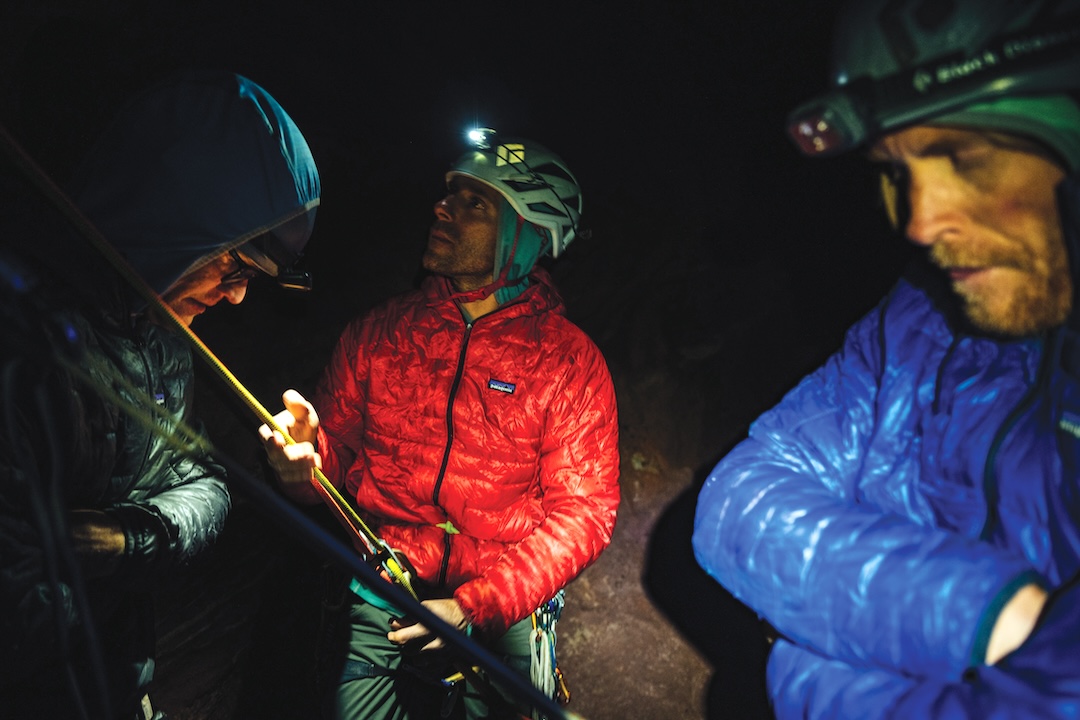Know the Ropes: Human Factors Behind Climbing Accidents
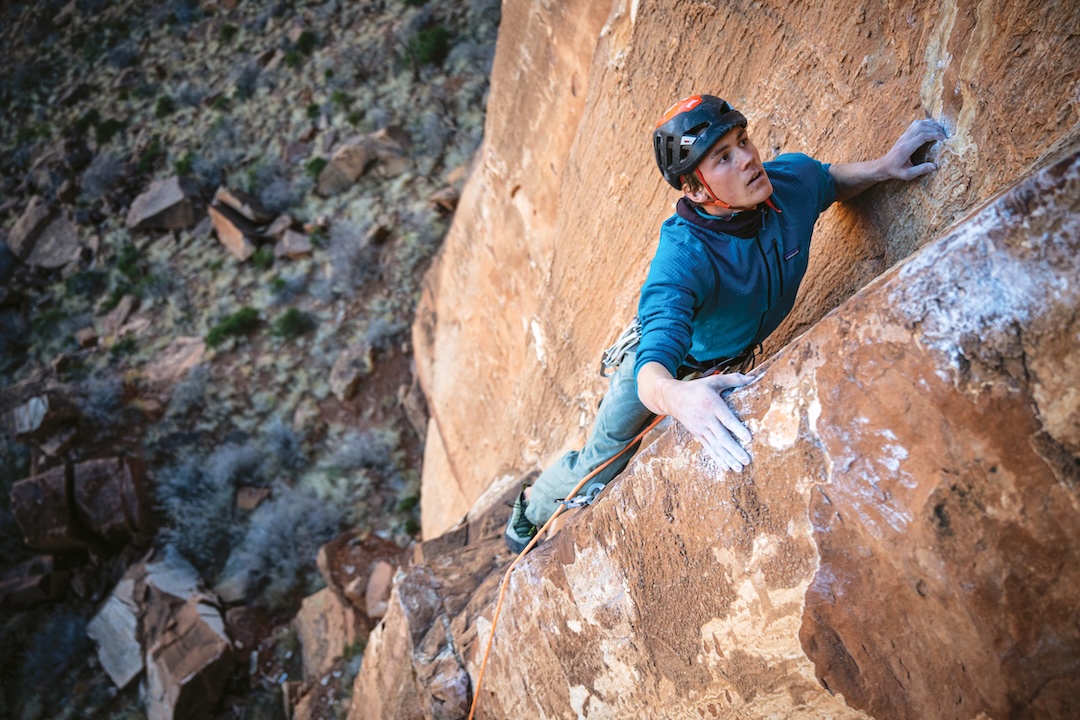
For 75 years, Accidents in North American Climbing (ANAC) has compiled and analyzed thousands of climbing accidents, creating a rich source of data for the climbing community. Over several months, two graduate students and I digitized all print ANACs dating back to the original publication in 1948.* Using grounded theory analysis—a method of extracting recurring themes from data—I identified key patterns in rock climbing accidents for a subset of the data (ANACs 2005–2024). *Editor’s Note: These files are not publicly available, pending completion of research and determination of disposition.
Climbing is not just a set of technical skills; human nature plays a significant role, which can lead to unnecessary risks. In the simplest of terms, who we are influences how we climb.
Understanding such patterns and the human experience is key to reducing risk and making safer decisions. How climbers act is influenced by many factors, such as gender, age, experience level, and relative position of authority. For example, women are less likely to speak up in mixed-gender settings; younger and newer climbers tend to trust others implicitly; and those with children and/or familial responsibilities may make poor decisions or act in haste due to a time crunch. Several psychological and social dynamics appear repeatedly in accident reports.
The following sections explore recurring themes in climbing accidents, supported by categorized insights and summarized case studies (full case studies are available at www.americanalpineclub.org). Each case is followed by a brief analysis and key takeaways to highlight the human factors at play. It is important to note that most climbing accidents don’t come down to technical skill—they stem from human psychology. While experience can help buffer some of these tendencies, it can also backfire; overconfidence built on past success is a factor in many accidents.
Encouraging open dialogue about these human factors may help transform painful lessons into collective wisdom that can guide us forward.
WHEN FAMILIARITY LEADS TO VULNERABILITY
Risk Normalization
Over time, climbers can normalize risky behaviors—like skipping backup knots, climbing with inadequate protection, or taking a more risky shortcut on the descent—leading to catastrophic results. Cognitive psychology shows that repeated exposure to a stimulus (e.g., performing a rappel) without negative consequences leads to decreased emotional arousal and lower perceived risk (Geller, 2001).
Case Study (ANAC 2005): An experienced sport climber at Barrier Bluffs, Alberta, experienced a rappel failure. This climber had completed hundreds of rappels prior to this accident. At the anchor of a routine climb, he set up a rappel but loaded his belay/rappel device incorrectly and neither tested the system nor used a rappel backup. Assuming all was well—because it always had been—he leaned back on the ropes, became detached, and fell 15 to 20 meters to the ground. The accident resulted in severe injuries.
Takeaway: Don’t let experience fool you into skipping checks. The more familiar a task feels, the more likely you are to overlook crucial steps. A process called risk desensitization has long been observed in fields like occupation safety (Geller, 2001). While accidents may occur for new climbers due to a lack of technical knowledge, a risk-normalized accident can occur when the experienced climber feels a false sense of comfort and safety. Risk never disappears just because you’ve done the same thing before. The mountain doesn’t care how often you’ve “gotten away with it.”
Gym-to-Crag Transition: Overconfidence in Outdoor Climbing
The growth of indoor climbing gyms has led to an increase in high-performing gym-trained climbers. When they transition to outdoor climbing, they often lack the training, know-how, and experience required to adapt to a new set of hazards and challenges. These include loose rock, placing protection, and variable weather. Because gyms often use the same technical grades as outdoor climbs, indoor climbers may overestimate their readiness—a known cognitive bias identified as the Dunning-Kruger effect (Kruger & Dunning, 1999; Slovic, 1987).
Case Study (ANAC 2022): On Anarchy Wall in Clear Creek Canyon in Colorado, a climber who had been “climbing 5.12 in the gym” attempted Power Trip (5.12a) outdoors. He appeared shaky from the start, drifted off route, missed a clip, and took a serious fall, flipping upside down and hitting his head. Although wearing a helmet, he exhibited signs of concussion. The incident underscores how gym ability can lead to overconfidence in unfamiliar, uncontrolled environments. It also reveals how gym climbers often choose an outdoor route based on the grade, although gym grades and outdoor grades often have very little real-life commonalities.
Takeaway: Climbing in a gym only prepares you with a fraction of the skills you need outdoors. The technicalities of footwork, sharp/loose rock, runouts, complex route-finding, and variable protection make outdoor leading a different sport. Consider mentorship or outdoor-specific instruction.
SYSTEM TRANSITIONS: A VULNERABLE PLACE
Transitions: Simple Mistakes, Fatal Consequences
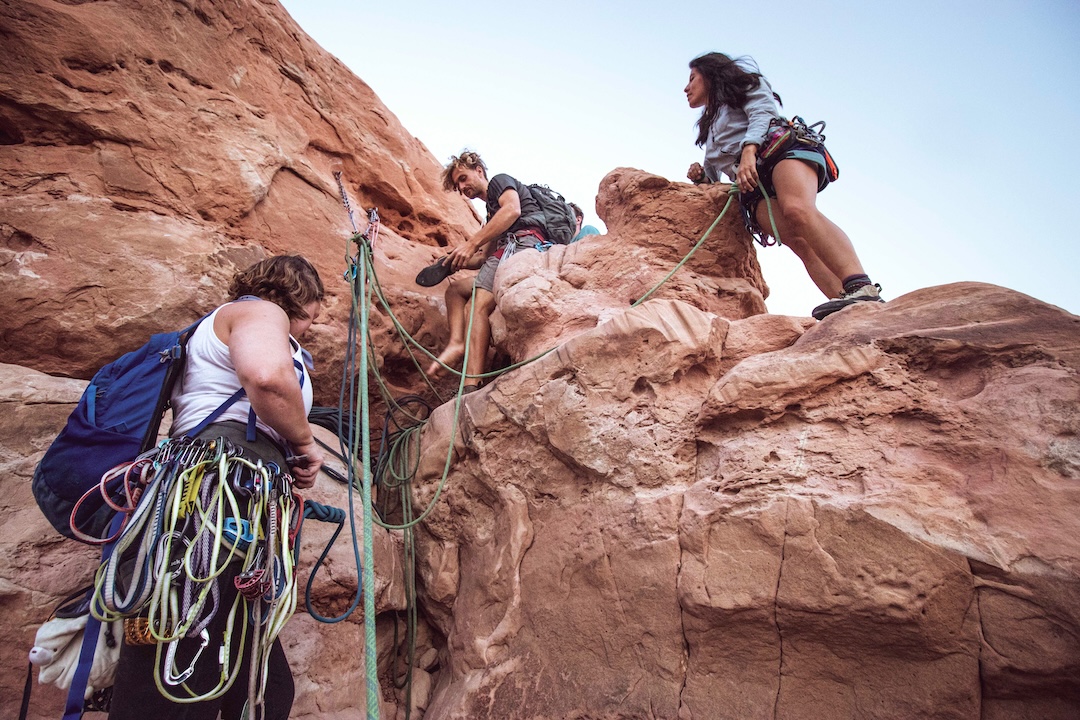
Transitions, particularly at anchor points and when swapping leads/belays or preparing to rappel or lower, are the cause of many severe injuries and fatalities. The most common mistakes are miscommunication between partners, incorrect use of belay/rappel devices, creation of overcomplicated safety systems, improperly tied knots, and failure to maintain a closed system.
Case Study (ANAC 2016): In Vermont at Bat Caves, a climber rappelled with a rope that was too thin for his belay device and did not test the system before unclipping from the anchor. Additionally, no friction hitch or other backup was used. When he initiated the rappel by jumping back, he rapidly lost control and could not stop his descent. This accident was fatal and a classic case of transition error exacerbated by improper equipment use and lack of redundancy.
Takeaway: Even the most experienced climbers can be vulnerable during transitions. They often require the climber(s) to dismantle a system in use and set up a different system. These moments combine distraction, fatigue, and assumption—a perfect storm for human error. Slow down. Communicate clearly and explicitly. Confirm systems out loud before anyone transitions from an anchor, rope, or belay. In a sport where trust is literal, it’s safer to confirm than assume.
Backup Failures
Protection: Failing to back up critical single pieces of protection or dubious gear like fixed pins, old bolts, or micronuts/cams is hazardous. Rappelling off a single piece of gear is a very bad idea and for this reason it is seldom ever done. One example of this hazard occurred on May 10, 2025, in the North Cascades (analysis to be published in the 2026 ANAC) when three climbers died after a single fixed piton pulled while being used as a rappel anchor. This is a stark reminder that redundant gear is very desirable to ensure climber safety, while the lack of backups in climbing systems are a persistent factor in fatal accidents. Often, a single bolt will be the only piece of gear between oneself and the hospital, but on modern climbs, the bolt and bolt placement is of a high standard/strength.
On Rappel: A stopper knot at each end of your rope is a simple, lifesaving safeguard against rappelling off the ends—yet it’s still one of the most common technical omissions cited in accident reports.
Case Study (Multiple Years): Many climbers have died or been injured due to rappel ropes without stopper knots or falling onto a critical single protection placement. For example, in ANAC 2017, a 31-year-old climber with moderate experience fell while rappelling from a sport climb after she rappelled off the end of one strand of rope about 25 feet above the ground, resulting in serious injuries, including fractures to both lower legs and a shoulder injury. The incident was caused by a failure to tie stopper knots or otherwise ensure the rope ends were secure.
Takeaway: Protection pulls, anchors blow, and mistakes happen. Back up dubious gear and sketchy single pro placements. Use stopper knots when you rappel.
THE PARTNER DYNAMIC: CLIMBING AS A SOCIAL CONTRACT
The Hesitation to Speak Up
When climbing, especially with an unfamiliar and/or more experienced partner, interpersonal dynamics can prevent people from speaking up when they observe a potential hazard. For example, a climber may hesitate to double-check safety systems of their more advanced partner out of fear of seeming inexperienced. This reluctance has contributed to numerous accidents.
Case Study (ANAC 2020): A 59-year-old climber at the Red River Gorge fell approximately 130 feet when his tie-in knot failed. The climber regularly used a bowline with a Yosemite finish to tie in; he told his belayer the knot was secure, but she did not check it (and she also was unfamiliar with the knot type). During his third attempt on a 5.12b route that day, he fell from the eighth bolt. The unfinished knot pulled completely through his tie-in points, resulting in a fatal ground fall.
Takeaway: Even experienced climbers can make fatal errors with familiar knots. Always perform a visual and physical check of tie-in knots—no assumptions, no exceptions, regardless of partner experience or routine. Discuss communication with your partner and don’t hesitate to speak up—it can save a life. If a pilot and copilot can run through the same checklist every single flight, so can climbers.
The Mentor Trap: Overrelying on the Other’s Experience
Climbers often assume that an experienced partner is infallible, but 43 percent of climbing accidents listed in ANAC since 1948 were suffered by experienced climbers. Trusting an experienced climber is great for learning, but it can also lead to ignoring personal risk assessments.
Case Study (ANAC 2018): While climbing at Echo Cliffs in California, a relatively new lead climber was encouraged by her more experienced partner to take the sharp end. Though hesitant, she agreed, trusting his judgment. During the climb, she noticed significant slack in the rope but chose not to speak up, fearing it might undermine her partner’s confidence in her. When she fell, the extra slack dropped 10 her to 12 feet and she impacted a protruding rock, resulting in severe injuries.
Takeaway: Confidence in a mentor should never override one’s own risk awareness. Mentees can fall victim to the “halo effect” and overtrust in the perceived expertise of their mentors (Thorndike, 1920; Tversky & Kahneman, 1974). No matter how experienced your partner is, speak up if something doesn’t feel right. Trust is important in a climbing partnership, but so is communication. Take ownership of your safety, especially when you sense something’s wrong. A healthy dose of self-advocacy can prevent injury.
FATIGUE, PRESSURE, AND THE DESCENT
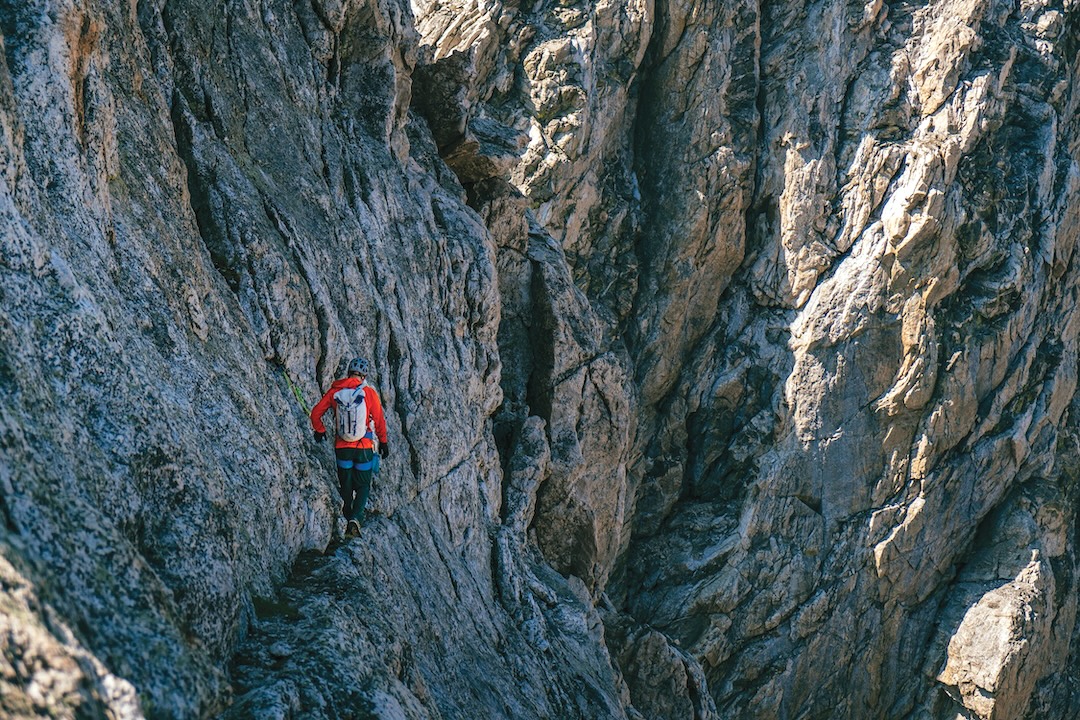
Emotional Pressure and Cognitive Strain
Fatigue, ego, and social dynamics impair judgment. Climbing decisions often happen under stress, whether from fear, pride, or peer pressure. Weekend warriors often have great stoke to get out and climb, but the sheer fatigue of fitting an epic climb into busy lives can increase risk. After making many decisions or facing sustained stress, people become less able to self-regulate and more prone to risk-taking or error (Baumeister et al., 1998).
Case Study (ANAC 2023): An experienced guide fell while leading a route he felt pressured to complete despite exhaustion and environmental stressors. He missed a clip and decked. The climber “reported having poor quality sleep in the two preceding nights. This, coupled with long program days, high winds, dust, wildfire smoke, and a recent history of illness and family stress, resulted in their psychological and emotional status being less than 100 percent.”
Takeaway: Emotional and cognitive strain is invisible yet powerful. Fatigue, stress, and social dynamics subtly erode decision-making. Even expert climbers can ignore signs of exhaustion or risk factors when there is pressure to complete a route—whether from clients, peers, or internalized expectations. Climbing isn’t just physical; it’s psychological. And when your head isn’t in the right space, the risk multiplies.
Decision Fatigue and the Descent
Many climbers get hurt when their focus and energy wane, usually on the descent. This is a hallmark of decision fatigue and cognitive depletion under stress (Baumeister et al., 1998; Kahneman, 2011). Fatigue (physical and mental) and pressure to finish the day and get home can lead to decisions that sacrifice safety. Sometimes, bad decisions are made under the guise of efficiency, but these often are the result of simply being too exhausted to make sound choices. Rappelling errors, poor route-finding on the downclimb, and slipping on exposed terrain account for nearly 30 percent* of serious incidents in some years. *Author’s Note: This statistic is calculated from 1951–2023 ANAC historical data.
Case Study (ANAC 2022): In 2021, a very experienced guide (age 35) suffered a ground fall while descending from a single-pitch route in Arizona. The climber clipped into the anchor with a hand-tied daisy chain and mistakenly jammed a knot in a carabiner versus clipping a loop. A busy schedule magnified this subtle yet near-fatal lapse in attention. This guide was also cramming in one last weekend pitch before a two-hour drive home and a three-week outdoor education course. Such transitions are ever more common as professionals, whose free time is relegated to evenings and weekends, attempt to integrate climbing into an already full schedule.
Takeaway: Treat any descent as carefully as the climb. Fatigue and pressure to get off the mountain are often contributing factors in poor decision-making or cutting corners. For example, if in doubt, build a solid rappel anchor instead of attempting a sketchy downclimb. While you may be ready for the day to be over, remember the old mantra of “slow is smooth, smooth is fast.” It’s safer as well.
UNDERESTIMATING OBJECTIVE HAZARDS
Environmental Hazards: The Underestimated Threat
Environmental factors—falling rock, avalanches, and sudden weather shifts—contribute to a significant number of accidents, especially in alpine and other traditional climbing environments. While these factors are seen by many as uncontrollable “acts of God,” climbers can make informed choices that mitigate exposure and risk.
Case Study (ANAC 2018): While descending at the base of El Capitan in Yosemite, a pair of climbers was struck by a massive rockfall. They were walking at the base of a route when a section of cliff gave way above Horsetail Fall. Andrew Foster, 32, was fatally struck while shielding his wife, who suffered serious injuries.
Takeaway: While environmental hazards like rockfall can strike without warning, climbers can avoid areas with signs of recent rockfall activity and minimize time at the base of steep, exposed walls. A helmet can help—but only if you’re not in the direct line of fire.
Magical Thinking Surrounding Fixed Gear and Camming Devices
Climbers often place a deep trust in fixed gear—nuts wedged in cracks, old slings around horns, pitons, and bolts. These pieces can feel solid and reassuring, especially on popular routes where they’ve “held before.” But time, weather, and repeated use silently degrade even the most bomber-looking placements.
Similarly, many climbers appear to put too much trust in camming devices. In 2023, all 13 reported accidents involving pulled protection were caused by failed cam placements. The apparent ease of placing cams can lead to blind trust in them, even though significant skill and experience are necessary to judge a sound cam placement. Like fast food, cams are fast, easy, and convenient—and, if blindly embraced with little restraint, dangerous and in some cases deadly.
Case Study (ANAC 2023): While leading a moderate trad route on the south face of Looking Glass Rock in North Carolina, a climber took a 20-foot fall when his piece of protection—a blue Metolius cam—ripped out of a shallow horizontal. The cam was placed in flaring rock and was not well aligned with the expected fall direction. With ledge exposure below, the fall resulted in a broken ankle and fractured ribs. The climber later admitted he had placed the cam in haste, but should have done so with the time required to place it, “as good as it could be.”
Takeaway: Climbing gear is only as safe as its placement and your understanding of how it integrates into your system. When in doubt, build in redundancy—and always climb with the assumption that gear can fail. Trust in fixed gear often relies on mental shortcuts or assumptions that bypass critical inspection (Reason, 1990).
Learn the basic principles of passive protection before graduating to using cams. What nuts lack in sex appeal, they make up for in solidity and reliability.
MOVING FORWARD: A CULTURE OF RISK AWARENESS
Many of the most common climbing accidents do not stem from a lack of technical skill, but from well-studied psychological phenomena.
Risk normalization reflects how familiarity can desensitize us to danger (Geller, 2001), while authority gradients and the “halo effect” (Thorndike, 1920) can suppress vital safety communication. Decision fatigue (Baumeister et al., 1998) undermines judgment during long or stressful climbs, and trust in fixed gear often relies on heuristics that bypass critical inspection (Reason, 1990). This analysis draws from grounded theory and accident data, but the patterns echo decades of human factors research from fields like aviation, health care, and behavioral economics. By recognizing these recurring themes, we, as climbers, can actively manage risk and ensure what we all want: a day filled with stoke and climbing in the great outdoors.
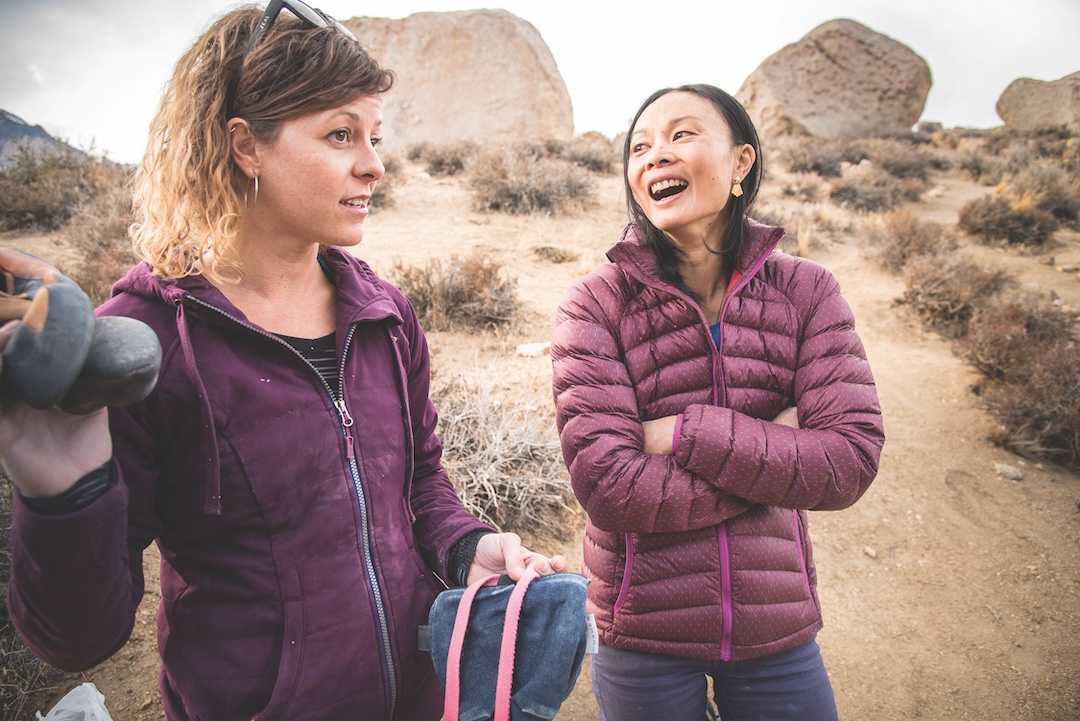
My training in social science research as a means to understanding human behavior may provide a new lens to learn from the lived experience of others and to prevent future accidents. It is a privilege to be able to review accidents after the fact, and by no means does this research intend to lay blame or responsibility at the feet of those impacted. My hope is for this work to foster conversations within the climbing community about what we have to learn from these accidents and who we are within them, not from a place of judgment but from a place of continual learning, mutual understanding, and mindfulness.
The climbing community is evolving, and increased awareness of these social dynamics can lead to more inclusive, communicative, and ultimately safer climbing partnerships. The best teams are those where every member feels empowered to voice concerns and participate equally, especially in regard to safety. The mountains present inherent danger, but we have the power to learn from others’ mistakes and make more informed choices. The lessons in Accidents in North American Climbing should serve as guides—not memorials.
Dr. Valerie Karr has spent decades studying human behavior in complex environments. She has conducted dozens of large-scale evaluations and research for organizations like the United Nations, World Bank, and USAID—analyzing problems at the intersection of policy and behavior. A passionate climber, she enjoys long multipitch climbs like the Grand Teton, Royal Arches, and the Whitney-Gilman—while balancing life as a single mom with young children.
Acknowledgment
The author thanks ANAC editor Pete Takeda for his invaluable contributions, editorial eye, and thoughtful technical insights during the analysis and drafting of this piece.
Resources
Baumeister, R.F., Bratslavsky, E., Muraven, M., & Tice, D.M. (1998). Ego depletion: Is the active self a limited resource? Journal of Personality and Social Psychology, 74(5), 1252–1265. https://doi.org/10.1037/0022-3514.74.5.1252
Geller, E.S. (2001). The Psychology of Safety Handbook. CRC Press.
Kahneman, D. (2011). Thinking, Fast and Slow. Farrar, Straus and Giroux.
Kruger, J., & Dunning, D. (1999). Unskilled and Unaware of it: How difficulties in recognizing one’s own incompetence lead to inflated self-assessments. Journal of Personality and Social Psychology, 77(6), 1121–1134. https://doi.org/10.1037/0022-3514.77.6.1121
Reason, J. (1990). Human Error. Cambridge University Press.
Slovic, P. (1987). Perception of risk. Science, 236(4799), 280–285. https://doi.org/10.1126/science.3563507
Thorndike, E.L. (1920). A constant error in psychological ratings. Journal of Applied Psychology, 4(1), 25–29. https://doi.org/10.1037/h0071663
Tversky, A., & Kahneman, D. (1974). Judgment under uncertainty: Heuristics and biases. Science, 185(4157), 1124–1131. https://doi.org/10.1126/science.185.4157.1124

